3D BABY Skin
A reliable and ethical model for baby skin care evaluation
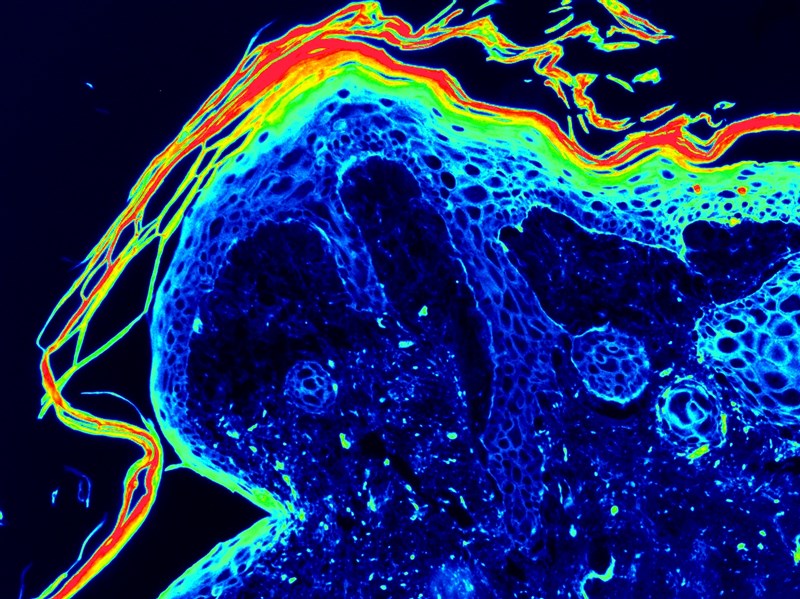
What is it About?
Baby skin significantly differs from adult skin in structure, function and biochemical composition and still continues to mature through the first year of life. At birth, the skin of term newborns behaves as a competent physical inside-out and outside-in barrier, but not at the capacity of adult skin. Hence, baby skin is considered as more “fragile” and “sensitive” than adult skin and is prone to dermatitides and infections.
Given the importance of suitable skin care regimen in neonates to maintain the natural adaptation of skin barrier, LabSkin Creations team developed an appropriate and accurate 3D model of infant skin suitable for more realistic and sensitive testing of products dedicated to babies.
An in-vivo like model for a more realistic testing
By using our proprietary technologies based on scaffolding biomaterials combined with advanced cell culture techniques, LabSkin developed a 3D reconstructed baby skin model closely resembling native tissue.
3D ADULT
reconstructed skin
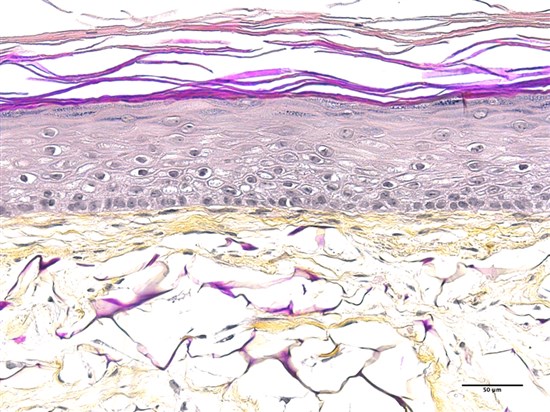
3D BABY
reconstructed skin
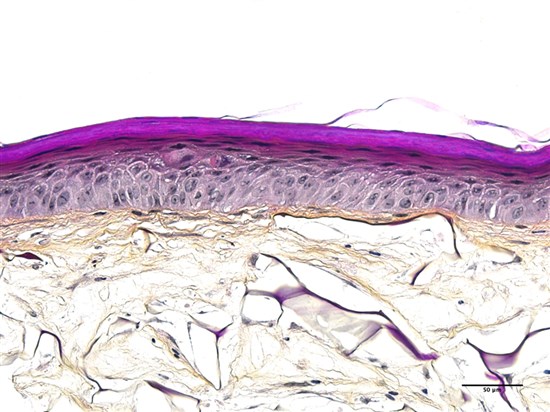
3D baby reconstructed skin is considerably different from the adult skin model: both stratum corneum and epidermis are thinner, closely to what is observed in vivo. Corneocytes are smaller and granular cells are more densely packed in infant model versus adult. In the brick and mortar analogy, the bricks are smaller and the wall is thinner for infants.
Baby skin, a skin under maturation
At birth, the skin and especially the epidermis is structurally and functionally immature, with elevated
skin surface pH and lower resistance to chemicals and pathogens. The complete maturation process
of neonatal skin takes from 2 to 4 years.
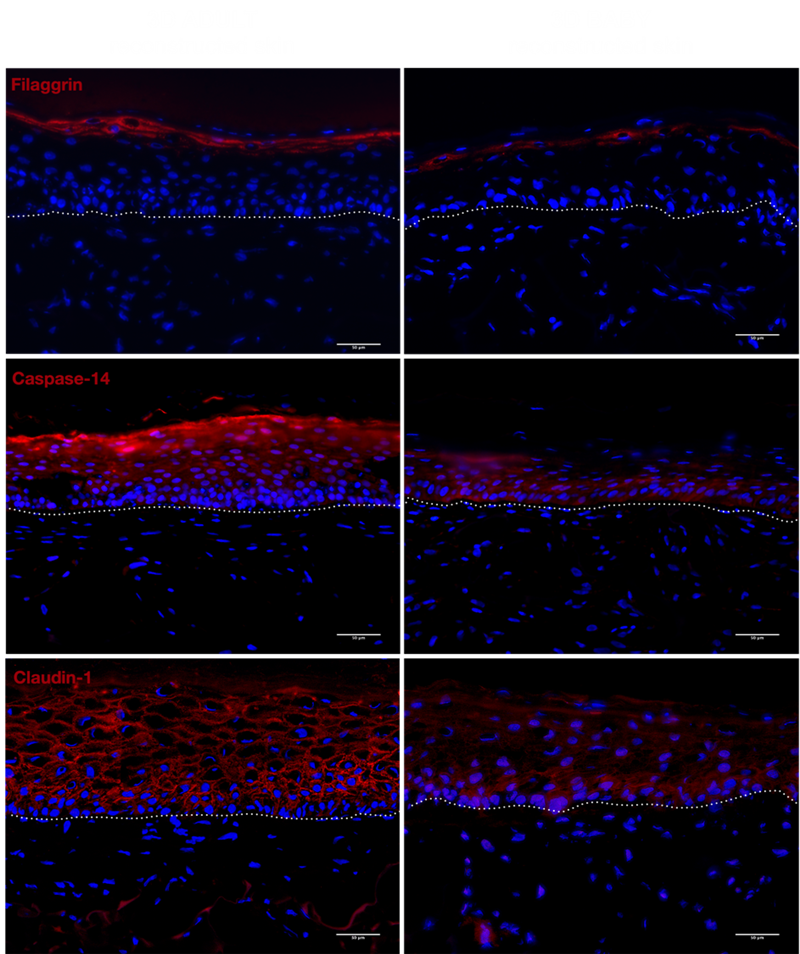
As seen in vivo, the epidermal suprabasal layers of our 3D Baby reconstructed skin model show a significant under-expression of filaggrin, caspase-14 and claudin-1 compared with the adult model.
Baby skin, a fragile skin barrier function
Immediately after birth, the skin barrier of healthy, full-term neonates is competent, yet skin-barrier
function continues to develop through at least the first year of life. This developing state of infant skin
results in infant skin being susceptible to dryness and irritation from external factors as well as harsh
topical skin-care products.
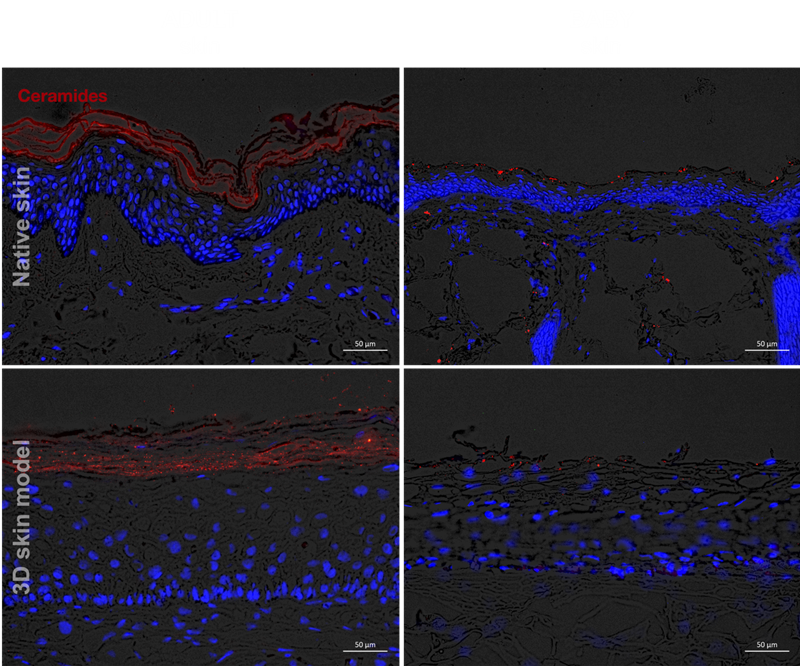
Ceramides are important lipids found within the stratum corneum, contributing to the intercellular lipid bilayer, essential in the regulation of trans-epidermal water loss (TEWL) and healthy barrier function. Similar to in vivo observations, our 3D baby skin model shows a under-expression of ceramides. Ceramide depletion is associated with dermatological problems, eg, atopic dermatitis.
LabSkin 3D Baby skin model closely resemble to in vivo observations and may be suitable for the assessment of baby skin care aimed at enhancing epidermal barrier function.







